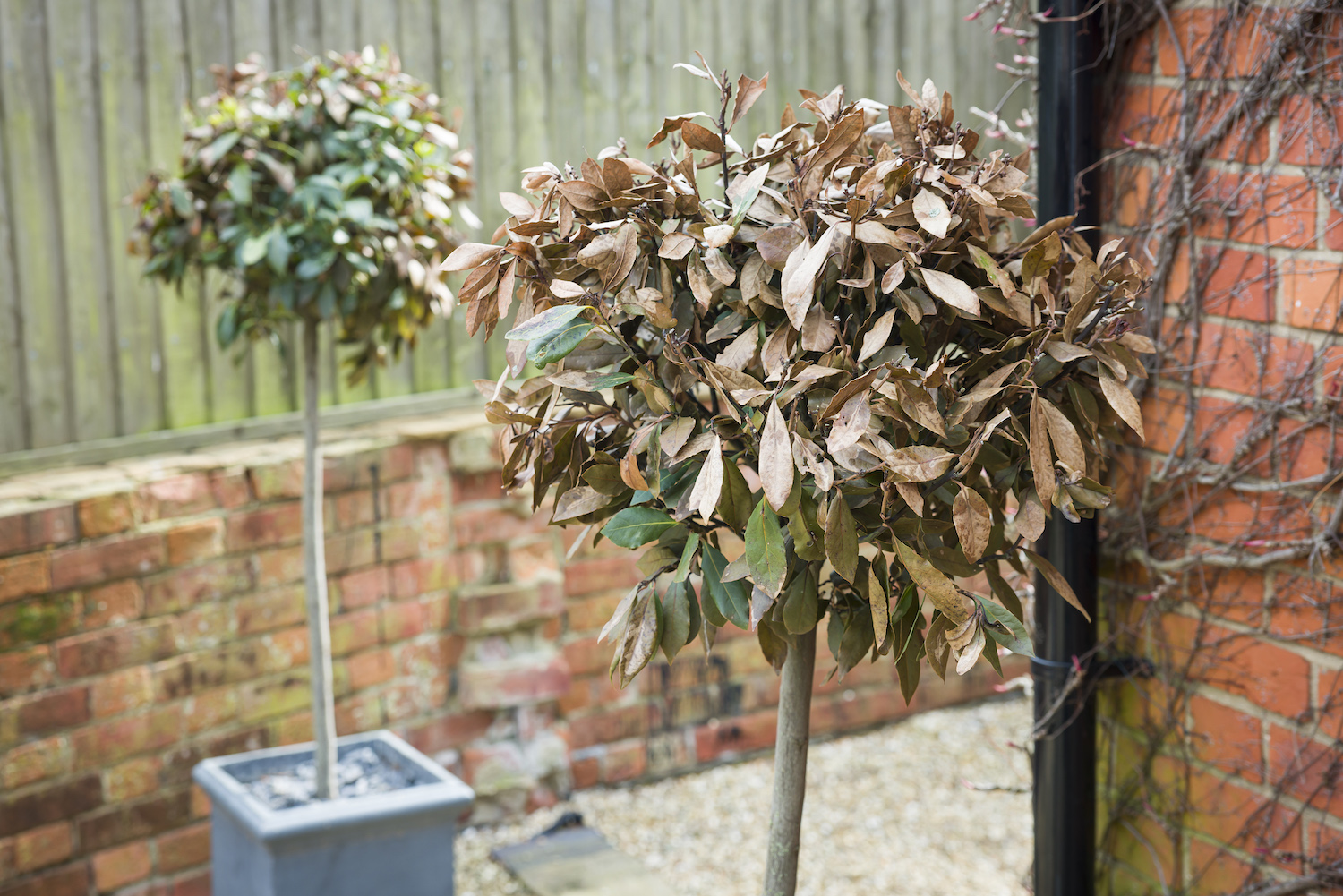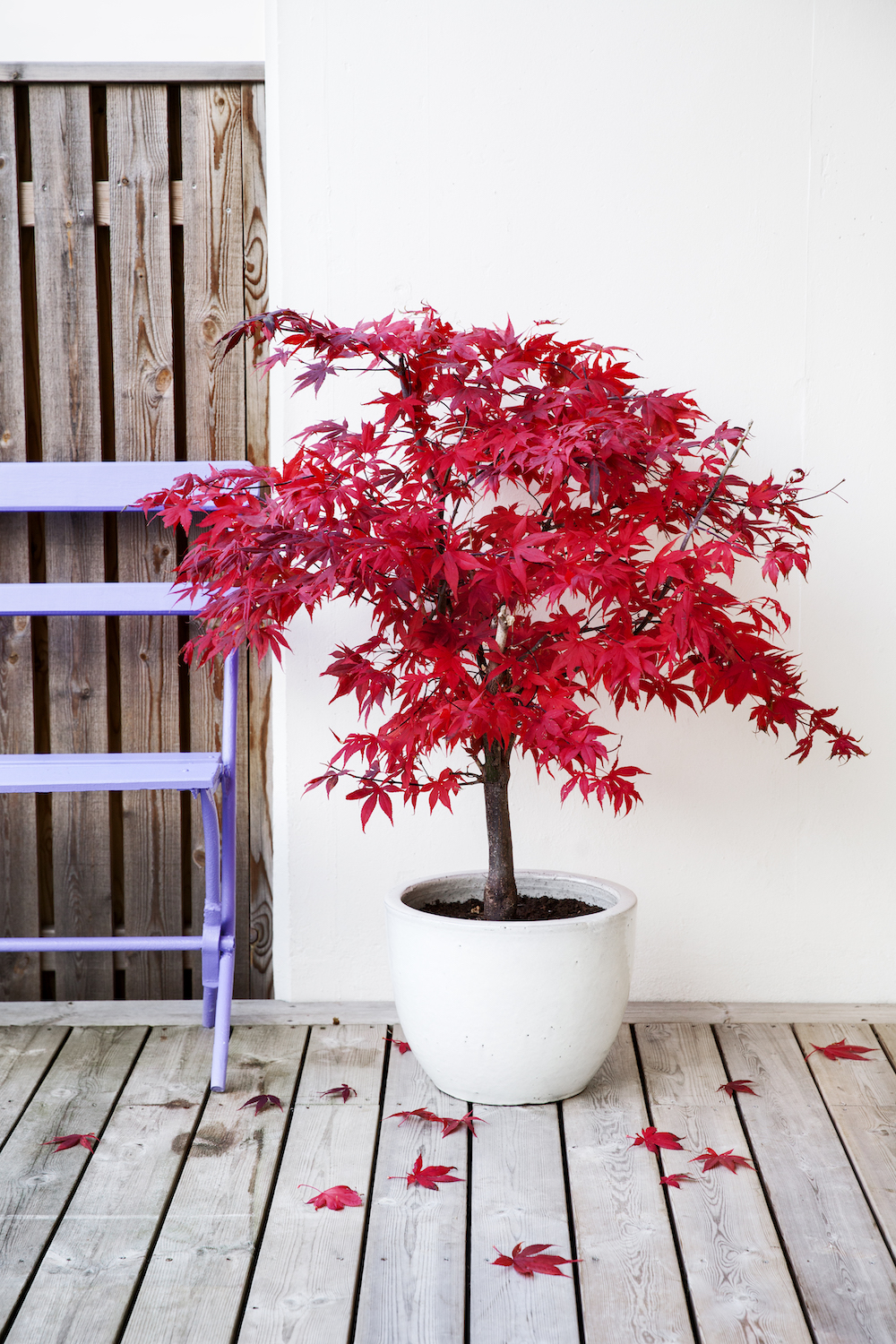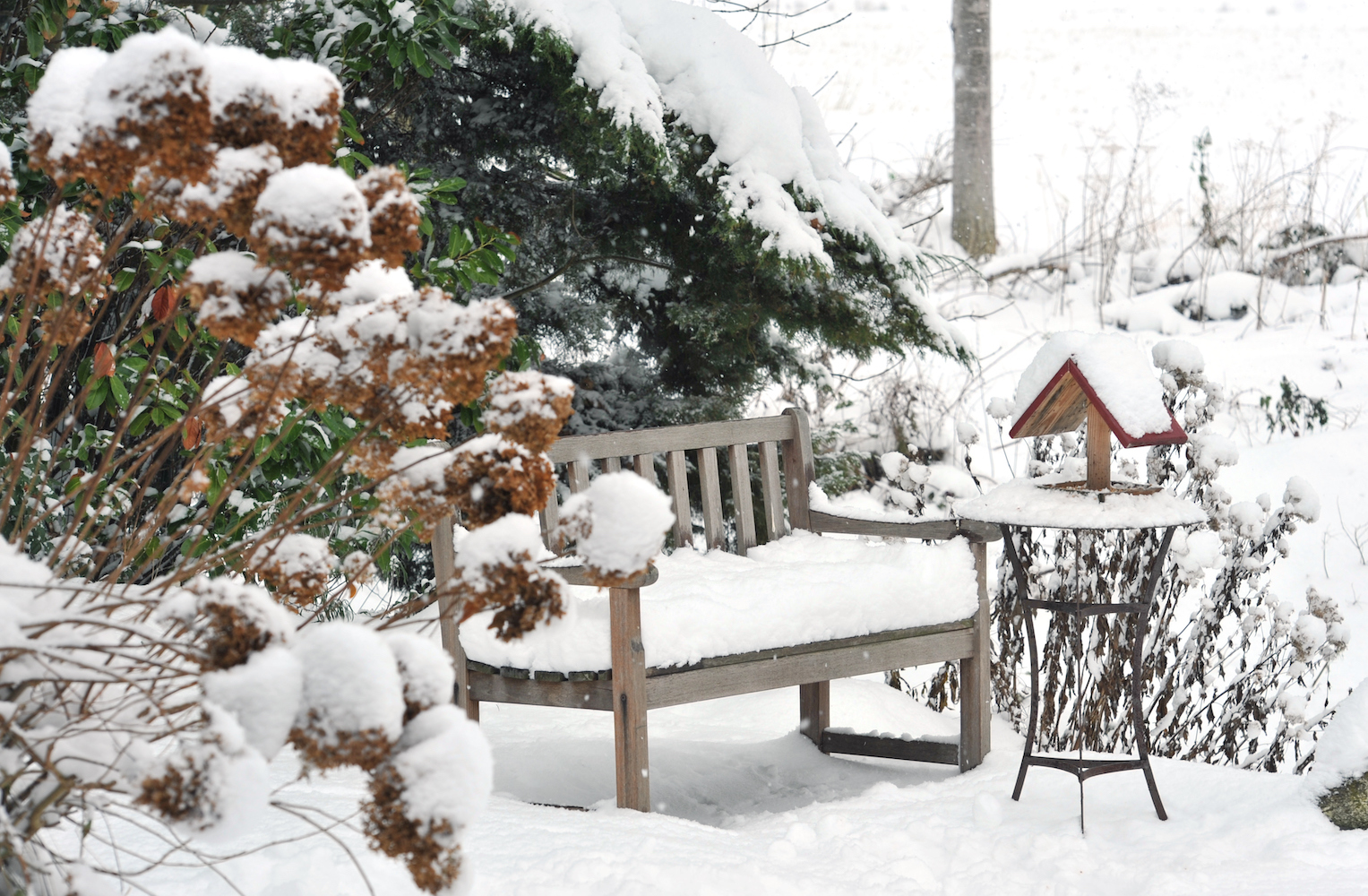What Temperature Should I Cover my Plants for Frost? Take Action When the Thermostat Drops to This Number
When to protect perennials, trees and other plants from a cold snap according to experts

Losing a prized plant or tree in a cold snap is disheartening. Yet it's simple to prevent this happening. If you've ever wondered 'what temperature should I cover my plants at night?', our experts have the answer.
Of course, different plants thrive (and survive) in different climates. So the best temperature to cover plants will vary, depending on the species and its location.
Native plants most suited to your USDA Plant Hardiness zone will cope best when the temperature dips. Although even winter hardy plants in exposed spots or in pots in a modern garden may need some protection.
'There are generally two reasons why I would cover certain plants in winter,' says New York-based Kat Aul Cervoni, landscape designer and founder of Staghorn NYC and The Cultivation by Kat. 'First to protect certain evergreens (like boxwood, or laurel) from wind burn in particularly low temperatures or windy conditions. Or to protect certain tender plants, like veggies, from frost.'
What temperature to cover plants at night?

According to our landscape gardening experts, when the mercury drops below freezing (32ºF/0ºC) it's a good time to cover certain, susceptible plants at night. Also when adverse conditions are on the way.
'It's worth protecting boxwood and laurel when the temperature is expected to be below freezing and high winds will also be part of the mix,' says Kat Aul Cervoni. 'A snow storm, strong cold front, or blizzard would be a good example.
'With tender plants, like veggies, the goal here is to protect foliage from direct exposure to frost and also to create a pocked of slightly warmer air around the plant,' Kat adds. 'This is typically something that might be done in fall to help extend the season a bit – eventually all those tender veggies and annuals will die in NYC/Northeast winters regardless of coverage.'
The Livingetc newsletters are your inside source for what’s shaping interiors now - and what’s next. Discover trend forecasts, smart style ideas, and curated shopping inspiration that brings design to life. Subscribe today and stay ahead of the curve.
Keep in mind what to use to cover plants from frost, so that you have it at hand in case the weather catches you by surprise.
What plants to cover

Non-native species not accustomed to the local weather conditions will require protection, if you want to see them beyond the winter.
'Some of our clients plant marginally hardy fig trees or have trees planted in particularly windy and cold locations, and we recommend they wrap the trunks with tree felt before the nighttime temperatures are consistently below freezing,' says New York-based landscape gardener, Amber Scott Freda at AmberFreda.
'These are generally ornamental, deciduous trees planted in containers that are exposed to windy winter conditions. This might include Japanese maples, dogwoods, cherry trees, figs or other fruiting trees, hornbeams, and Japanese snowbells.'
'In New York, and other places with cold winters where snow and ice are a given, the plants that might need some extra protection at night during winter-weather events will be ones that are susceptible to wind burn or that are right on the line of hardiness,' says Kat.
'In addition to boxwood and laurel (e.g., cherry laurel or skip laurel), other examples are ilex, rhododendron, pieris andromeda, skimmia.
'I'd also recommend covering certain palm trees like Trachycarpus when overnight temps are at freezing or below. And bring citrus trees e.g., meyer lemon) and olive trees indoors in winter in NYC or other cold winter areas.
'Typically, the larger the foliage, the higher the risk of wind burn or winter damage, so avoid using those larger-leaf plants in exposed spaces.'
What plants don't require cover

Native plants that have grown in your region for hundreds–or even thousands-of years will be most adaptable to cold weather. They will require less maintenance and will look better in their natural state too.
'We don’t typically recommend plants that would have to be covered,' says Amber. 'We don’t find that covering plants with burlap works all that well in general, and it can be unsightly and interfere with photosynthesis.
'Most evergreen trees, such as arborvitaes, pines, cypresses, and spruces, are very winter hardy and don’t generally need to be protected from the cold. Although some people like to cover them to help prevent the deer from eating them.'
'Fortunately, the majority of hardy perennial and woody plants will not require being covered,' says Kat. 'This goes for New York, and I believe most gardens - in general - in which the plants are zoned for that area's hardiness.
'Being from a region with cold winters and the potential for extreme winter-weather events (though aren’t we all in the latter category now) my rule of thumb is to use a majority of hardy perennial and woody plants in my gardens in accordance with our hardiness zone,' continues Kat.
'I also plant strategically, so place plants that are more susceptible to winter damage are in well-protected areas, or I forgo use in certain gardens altogether.
'My favorite super-tough plants that never need protection and have survived without issue even in the harshest winters include: hydrangea paniculata, lilac, elderberry, juniper, peony, coreopsis verticillata, shasta daisy, beech tree, linden/lime tree and amelanchier (serviceberry).
Jacky Parker is a freelance lifestyle journalist and writer, producing a wide range of features for magazines and digital platforms. She has written for Livingetc and its sister titles, Homes & Gardens and Country Homes & Interiors for more than 15 years, both as a freelance contributor and as Acting Digital Editor and Acting Style Content Editor, regularly reporting on the latest interiors, gardens and wellness inspiration, speaking to experts in their respective fields, and discovering the best tips.
Jacky has also written for other publications, including Sunday Times Style, The Telegraph, Architectural Digest, House Beautiful, ELLE Decoration, Red, Grand Designs and more.